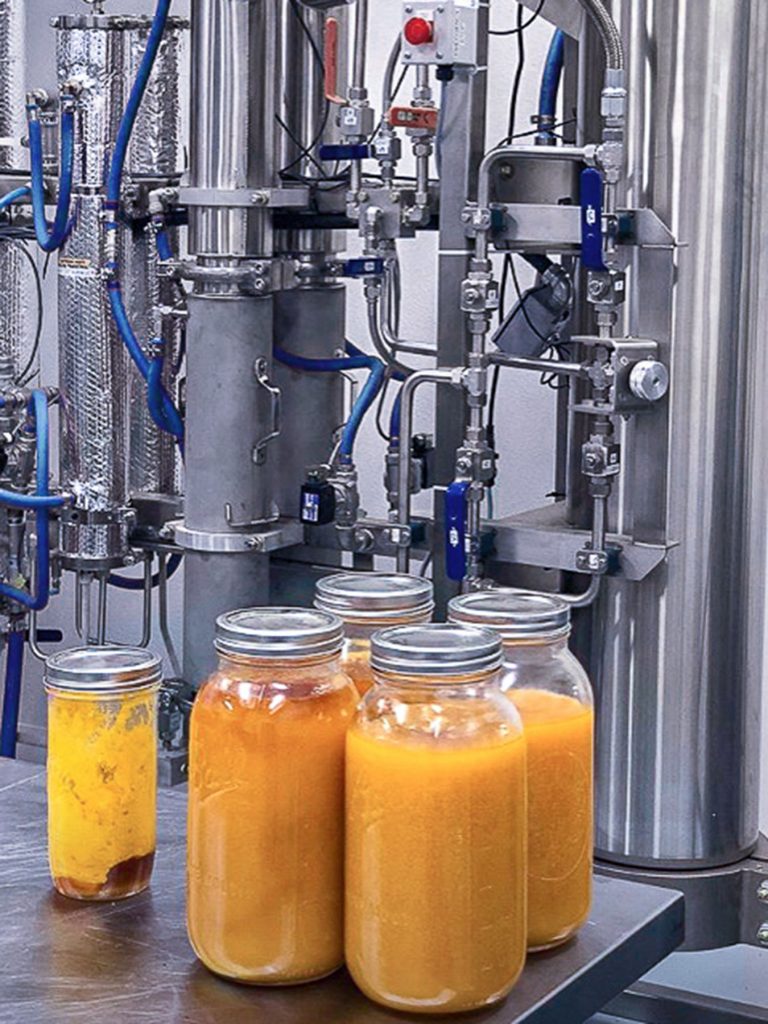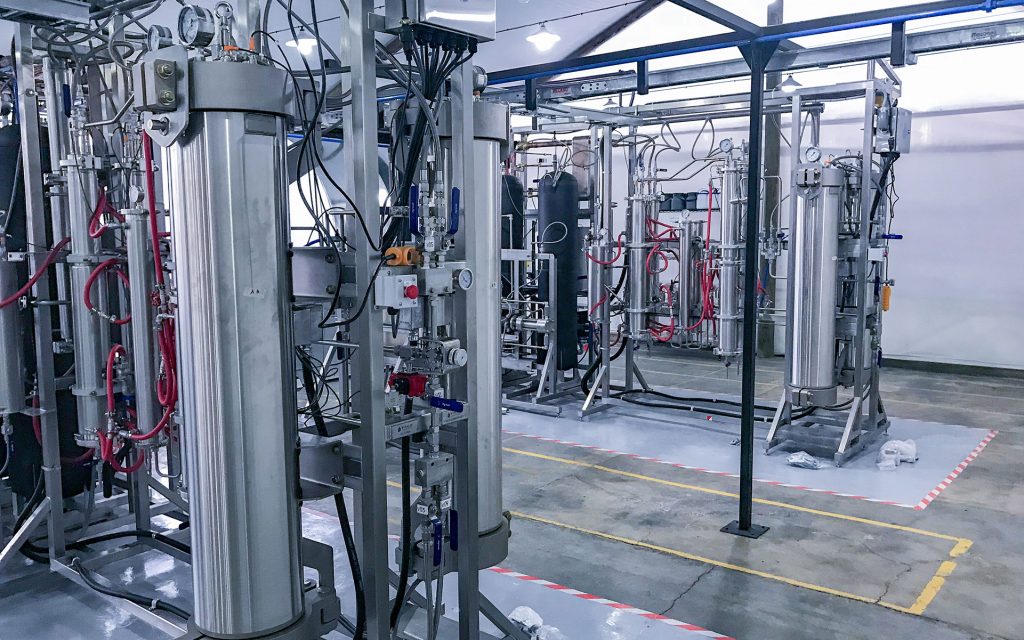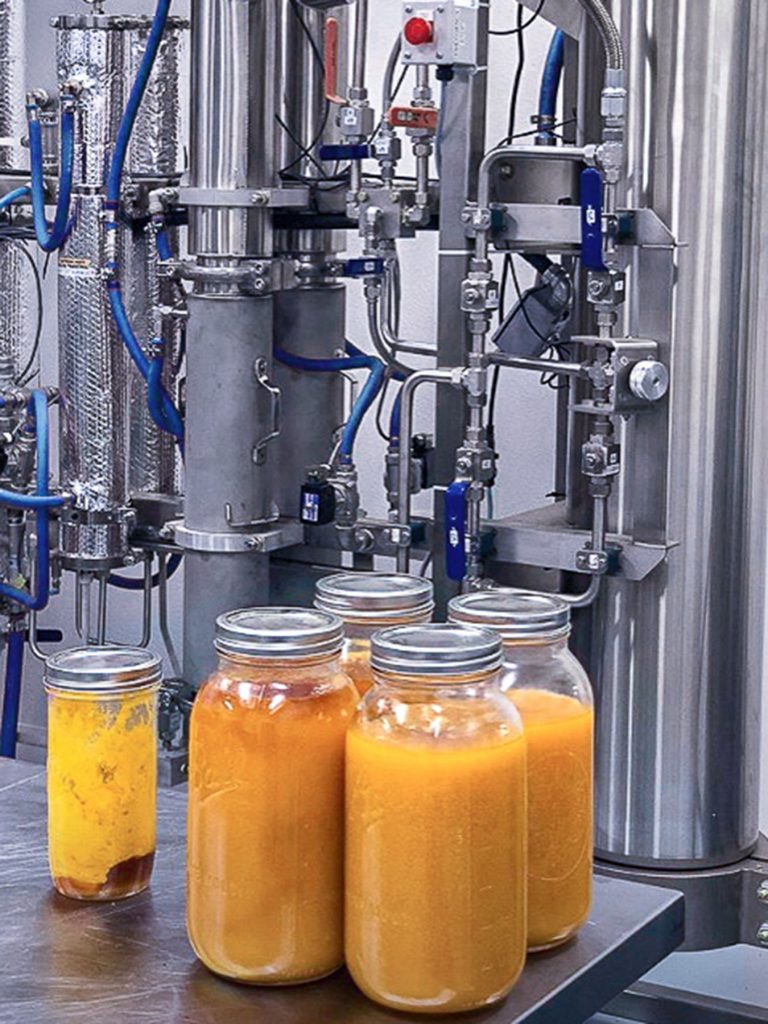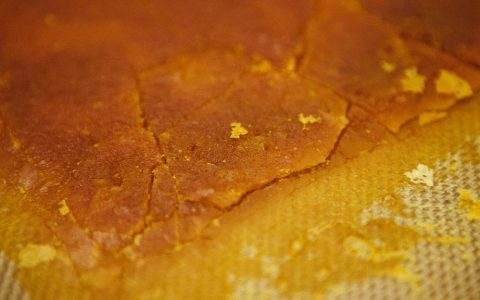This article is sponsored by Vitalis Extraction, manufacturer of some of the world’s most sophisticated supercritical CO2 extraction equipment.
As cannabis legalization spreads across North America, it’s bringing with it new methods of cannabis consumption. While beautiful and diverse selections of flower are easy to find in any dispensary, more and more of the products on shelves are made possible by cannabis concentrates like oil and distillate.
From vaporizer cartridges to substances like shatter and crumble to infused drinks and edibles that get their THC from cannabis distillate, concentrates are increasingly well-represented in modern cannabis markets. In 2016, vaporizer carts made up more than a quarter of the business for California-based cannabis delivery company Eaze, and the market has only grown in the past years.
A recent analysis of the industry predicts that cannabis concentrates will represent an $8 billion market in the U.S. alone by 2022. The money involved has set off a gold rush of companies looking to make their name in this burgeoning industry, but breaking into the concentrate game is no simple business.
 Vitalis Extraction equipment uses CO2 to extract THC and other cannabinoids from cannabis flower. (Courtesy of Vitalis)
Vitalis Extraction equipment uses CO2 to extract THC and other cannabinoids from cannabis flower. (Courtesy of Vitalis)
Cannabis Concentrates Explained
The idea of cannabis concentrates has been around for much of the history of the plant. One of the most iconic cannabis products of all time, hashish, was an early form of concentrate. Hash packed high volumes of THC, the most famous and psychoactive ingredient in cannabis, into dense, sticky bricks and balls. More recently, Rick Simpson Oil, made by soaking cannabis in ethanol, became a household name.
In the wake of increasing cannabis legalization, though, entrepreneurs have turned the full power of modern chemistry on cannabis. Their goal has been to find ways to extract the cannabinoids that give the plant its character and effects, providing a way to enjoy the sensations associated with cannabis without having to smoke the actual flower.
The result is a huge array of new products and novel ways to consume cannabis. Some are extracted using butane, others with ethanol, and still others with carbon dioxide or CO2. They come in many forms, including glassy sheets, creamy resins, clear crystals, and amber-colored oils.
With so many methods of cannabis extraction available and fierce competition among new entrants to the scene, many aspiring concentrate crafters are turning to seasoned equipment companies to ensure they’re getting started on the right foot.
Extraction for Beginners
Since there are many ways to extract cannabis, and many different results producers aim for, there’s no single ‘right’ way to arrange an extraction setup. Indeed, many extractors will use multiple machines for different purposes.
Some shops are devoted to carbon dioxide-based extractions, others operate mostly on butane-centric machinery, and a few employ machines of both stripes and more. Some will have large-scale machines for extracting cannabinoids—as well as other important cannabis compounds like terpenes—from big batches of flower, and smaller setups that let them conduct experiments on the side.
Oregon-based Sweet Cannabis, for instance, is home to a variety of different extraction machines that put multiple technologies to use. The workhorse for the shop, though, is an F-Series extraction unit from Vitalis Extraction Systems.
“We’ve had the Vitalis unit in-house and operational for about a year now, and it’s the bread and butter of my day, every day,” says Zack Swanson, the lead extractor for Sweet Cannabis. “We have other equipment on hand that we will use for small batches, but the Vitalis machine pretty quickly became the basis for our day-to-day operations.”
Partnerships, Not Purchase Orders
For Swanson and Sweet Cannabis, there were a lot of factors to consider when making the investment in a serious piece of CO2 extraction gear. Safety was a major decision point, as was reliability. Extraction systems are foundational equipment for many cannabis companies these days, so making sure that employees are working with tools they can trust and rely on is key.
The other main thing that Swanson and his crew looked for was equipment that produced predictable results. “Consistency in final product is huge for us,” Swanson says. When you have a machine that doesn’t yield consistent results, you’re not bringing your customers something they know they can come back to. You have to have something that’s steady, stable, and reliable, producing the same result, the same way, day in and day out.”
 VItalis Extraction equipment on a shop floor. (Courtesy of Vitalis)
VItalis Extraction equipment on a shop floor. (Courtesy of Vitalis)
Just as important as the equipment itself, says Swanson, was the relationship that Vitalis cultivates with extractors employing its equipment. The Vitalis techs who drop by every so often for mechanical checkups are also partners in an information exchange who often come bearing suggestions from other Vitalis users—and pick up some pro tips from Swanson and his team.
“They really encourage people to make adjustments, do experiments, and share those results with them, so that they can act as an information hub for their other customers,” Swanson says.
Given the immaturity of cannabis concentrates as a market, those pointers can provide a valuable edge to extractors, teaching them things about their machines before they have to experience costly and time-sucking object lessons.
“Our relationship with the customer doesn’t end after the machine gets delivered,” said Aaron Godin, manager of application sciences at Vitalis Extraction Technology. “We really value long-term partnerships. Not only do we provide our customers with valuable information to improve their processes, but we also use their feedback to build better products, and provide a better overall customer experience.”
Godin does a lot of traveling in service of that goal, meeting Vitalis customers and helping them find ways to improve efficiency in their operations.
“This industry is still in its infancy, so everyone does things a little differently and there’s always an opportunity to learn something new,” says Godin. “We’ve worked very hard to get to where we are today, and it really comes down to our customers’ success. It’s very rewarding.”












